#Kurc
Explore tagged Tumblr posts
Text




They got me, y'all. New rot activated. Two youngest siblings being the closest out of the whole family??? You and me against the world vibes??? Lucy and Edmund Pevensie coded??? I am WEAK
Halina and Addy Kurc. They will break my heart and stitch it back together, I can feel it.
122 notes
·
View notes
Text

Emily Kurc is one of my favorite poets. I can feel this in my core
2 notes
·
View notes
Text
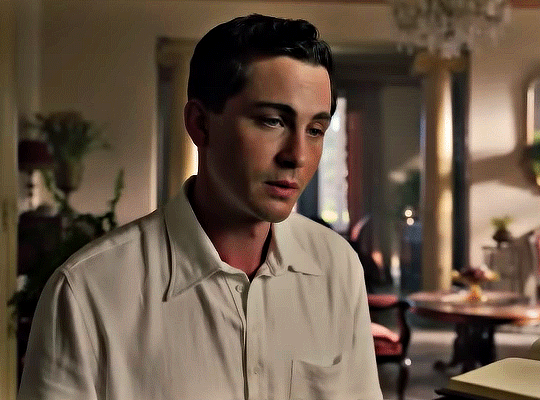
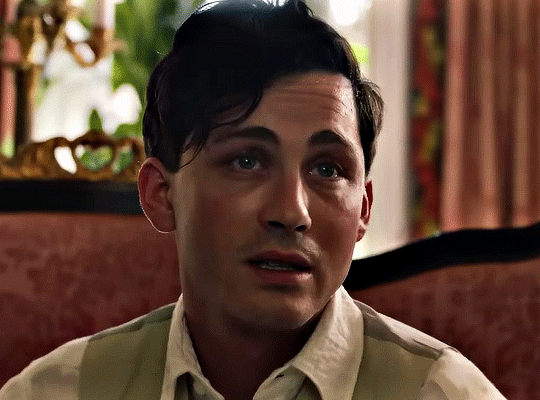
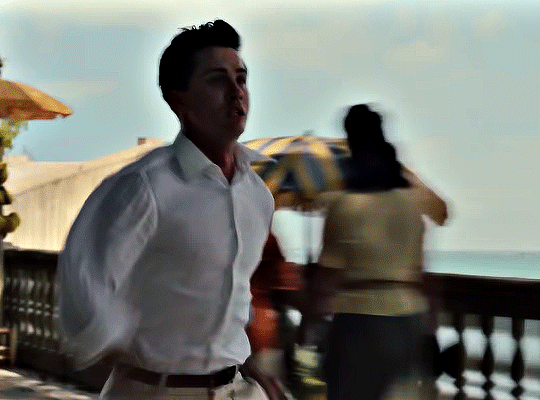


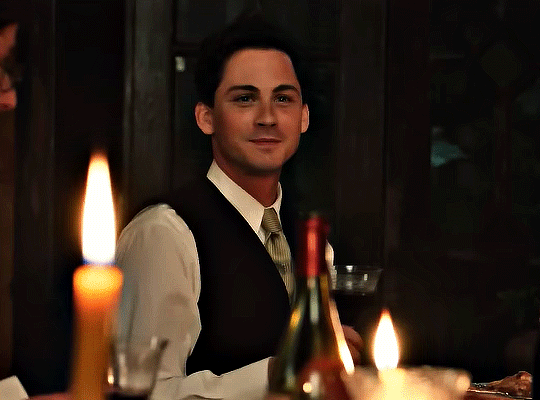
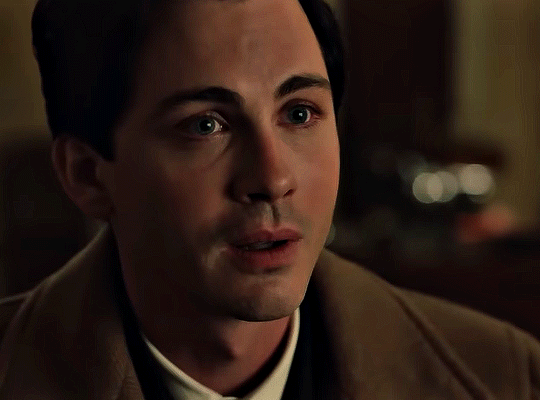
LOGAN LERMAN as Addy Kurc in WE WERE THE LUCKY ONES (2024)
#we were the lucky ones#logan lerman#drama#2020s#*#by mandie#adaptationsdaily#televisiongifs#userstream#onlyperioddramas#weloveperioddrama#bookstofilms#cinematv#tvarchive#filmtvtoday#userlera#usersavana#useraurore#userhugh#tuserdana#underbetelgeuse
203 notes
·
View notes
Note
Your stardew valley sketch of Harvey looks like the tall actor that is married to the character Halina Kurc from the tv series We were the lucky ones

Wait, you're not wrong 👁️👁️
12 notes
·
View notes
Text
We Were the Lucky Ones (2024)

Basic Story: A Jewish family in Poland is separated and must survive on nearly every front of the war.
Fan Thoughts: When this series was released in March there was very little fanfare, so I was not expecting much when I started watching. However, before the end of the first episode it was clear this was a very well-done series based on the true story of the Kurc family living in Radom, Poland starting in 1937. By putting this story into a series rather than a film, there is plenty of time to not only follow the many family members as they scatter to nearly every corner of the European theater, but it allows the slow building of tension as the politics in Poland shift and the Kurcs begin to see the signs but like most do not assume the worst until it is too late. Halina (Joey King) is a compelling lead, helping the Resistance while protecting her family by consistently helping them escape danger, find jobs, and find places to live. While Halina gets a large portion of the screen time, every member of the family gets their story told and with each person having vastly different experiences every episode is engaging and interesting. Every actor brings nuance and conviction to their roles; with the performances, the attention to detail, and direction that brings emotional impact without being heavy handed, this series is a genuine success. Engaging and at times heartbreaking, this is easily one of the top series reviewed by this blog this year!
Warnings: executions, torture
Available On: Hulu
7 notes
·
View notes
Text
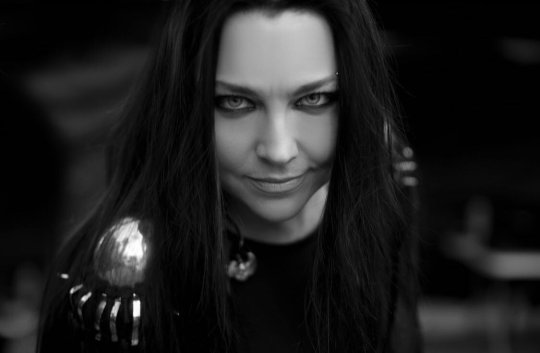

Evanescence in Poland 2023, photo by Alan Kurc
#evanescence#amy lee#the bitter truth era#Evanescence tour#live in poland#european tour#amy lee photos#amy lee outfits
16 notes
·
View notes
Text
Moje wymasone zycje
Moje wymasone zycje to że bym mjala ten swuj wymasony wyglond i nwm 152cm wzrostu co nje i no i tes ze nje byloby skoly tylko psypuscmy wakacje i ze mogłabym spać do puzna i nik by mje nje budzil i tes mjala swuj wymasony uwusny pokuj i takie ciuhy tes wymasone mjec i nosic i ze jakby nje mjec ocd anji ed i jakny zeby nje mjec takih mysli ani nawykuw i nje musiec wsystkkego sprawdzac i sikac 74474 rasy itp i tes zeby mjec duso jedzenja ale tylko kture lubje i od jedzenja nie tyc i zeby jedzenje bylo tylko jedzenjem a nje...tym cym jes i zebym nje musiala sje ucyc ani spsontac i mjala duso kosmetykuw skincare i haircare i rano robila skincare i sje ubjerala w jakjes nwm kulce emo a wjecorem nawet godzine cy dwje w kiblu sobje siedziec bo sje myc i w huj tego ze peelingi do ciała wlosuf ryja i wsystkjego i skincare haircare i jesce zebym umjala rysowac bes sablonu i zeby sybcjej mi wyhodzilo rysiwanje i zeby nje bylo rehabilitacji i zeby byl u nas sklep i zebysmy mjeli basen i zebysmy co pare dni cy cos gdzies jehali np do kina na krengle na pizze do babci zdzisi zeby tes nje bylo nudno ale nje za codzienje i zebym nje mjala zadnyh socjal mediuf tylko te stare konta ale ih nje usywala anji messa anji nicego i zeby mama mje kohala i zebym po plostu byla lepsa z harakteru milsa i wsystko i tes zebym censto s Tobom albo w bytowje sje spotykala albo Ty do mje na noc lub ja do Cjebie aaa i zeby wansee profcjo lakalnum i naruciak wsucali pare odc dziennje i zeby bylo wjencej internetu i aktualizacje w fortnite krucej trwaly i zebym lepsa byla w fortnite i tes hodzila na tance i spjew ale prywatnje ale tylko godzine w tygodnju zeby nje mencyc sje i tes zebym mjala duso pjeniendzy nwm kurce normalnje 150zl kjesonkowego nje kurwa nawet 250 i tes zebym nje mjala takih problemuw psyhicnyh i zdrowtnyh zeby nje bolal mje zawse bsuh i glowa i zebym mjala normalny okres i zebym nje tracila okresu na pare mjesiency i zebym sje caly cas nje tsensla i zebym nje cula sje ze zaras zemdleje 24/7 po prostu w skrucie zebym byla zdrowa i zebym nie upadala i sje nue tsensla po prostu zdrowa.... I no wjem duso wymagan ale tak top 3 najwasniejse:
1. Wymasony wyglond
2. Zdrowje psyhicne i fisycne
3. Hyba te kosmetyki albo styl zycja ze bes skoly i mosna spac
A ewentualnie ze skolom:
A jesli jus muse tom skole walonom to po plostu zebym nigdy nje byla do 16 i zawse mjala mjej nis 8 lekci lub sje zwalniala kulce nawet uciekala zeby o 14;30 zawse w domu byc i nje mjala reha no i po plostu zebym sybko hodzila spac lub spala w dzien i sje wysypjala (ale nawet jak w wolne spje po 14h to jesem wykoncona i cuje ze zemdleje bo to nje brak snu to po 1. wykoncenje fizycne po dwa njeodrwacalne skutki anoreksi) i zebym w autobusie sjedziala sama i rodzice mi dawali wjencej pjeniendzy i zebym mogla jesc w skole no niby moge ale poplakalabym sje i kulce na lekcjah pic sobje socek albo kole albo jakjes zelki cy mentosy ojebac i na lekcjah spac grac na telefonje i mjec airpodsy i za wlosami ukrywac je i suhac kpopu na lekcjah i tes zebym mogla wejsc do sklepu i kupic cos do jedzenja i zebym nje wjem po prostu mogla jesc po skole i wgl i to bes wysutuw sumjenja i zebym od tego nje tyla i zebym nje mjala obowjonskuf i nje marnowala casu na socjal mediah i psede wsystkim *mjala muj wymasony wyglond wage i wzros* cyli 152cm lub mjej i tes zebym mjala lepse oceny ewentualnje i wasne tes zeby mama mje kohala i tak samo z tym zdrowjem zeby randomowo mje nje zacynalo kluc i nje bolaloezebym nje tracila okresu i mjala sile na cokolwjek bo dla mnje wstanje z lawki to casami walka z zycjem i ja nje zartuje i tes xebym nje mjala ocd i nje musialaezaznacac jakis zecy w zesycje pses to ocd i mogla isc do kfc abo maka abo na pizze cy na lody i do rossmana censto i kupowala kosmetki i no
5 notes
·
View notes
Photo

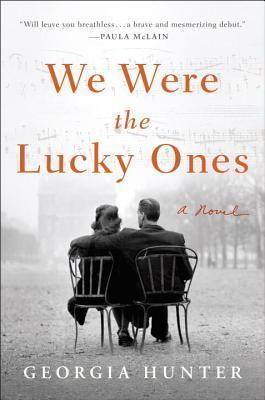
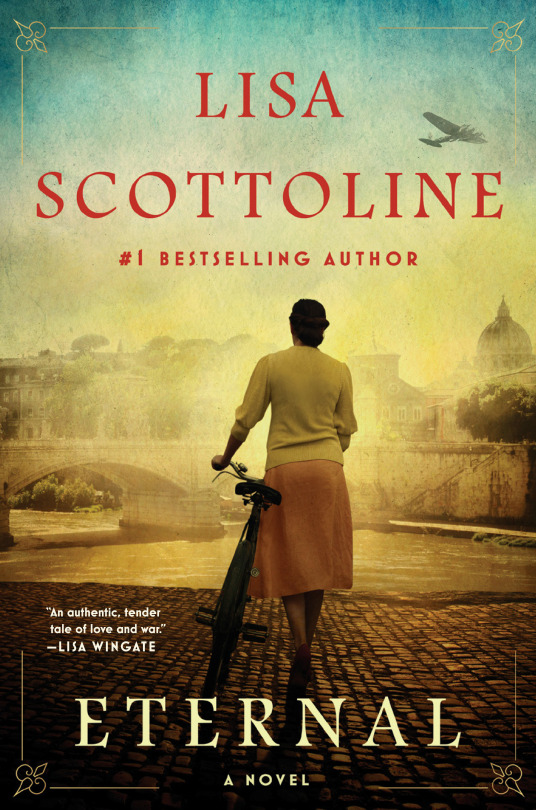

Fiction Recommendations: Jewish American Heritage Month
The Matchmaker’s Gift by Lynda Cohen Loigman
Even as a child in 1910, Sara Glikman knows her gift: she is a maker of matches and a seeker of soulmates. But among the pushcart-crowded streets of New York’s Lower East Side, Sara’s vocation is dominated by devout older men—men who see a talented female matchmaker as a dangerous threat to their traditions and livelihood. After making matches in secret for more than a decade, Sara must fight to take her rightful place among her peers, and to demand the recognition she deserves.
Two generations later, Sara’s granddaughter, Abby, is a successful Manhattan divorce attorney, representing the city’s wealthiest clients. When her beloved Grandma Sara dies, Abby inherits her collection of handwritten journals recording the details of Sara’s matches. But among the faded volumes, Abby finds more questions than answers. Why did Abby’s grandmother leave this library to her and what did she hope Abby would discover within its pages? Why does the work Abby once found so compelling suddenly feel inconsequential and flawed? Is Abby willing to sacrifice the career she’s worked so hard for in order to keep her grandmother’s mysterious promise to a stranger? And is there really such a thing as love at first sight?
We Were the Lucky Ones by Georgia Hunter
It is the spring of 1939 and three generations of the Kurc family are doing their best to live normal lives, even as the shadow of war grows closer. The talk around the family Seder table is of new babies and budding romance, not of the increasing hardships threatening Jews in their hometown of Radom, Poland. But soon the horrors overtaking Europe will become inescapable and the Kurcs will be flung to the far corners of the world, each desperately trying to navigate his or her own path to safety.
As one sibling is forced into exile, another attempts to flee the continent, while others struggle to escape certain death, either by working grueling hours on empty stomachs in the factories of the ghetto or by hiding as gentiles in plain sight. Driven by an unwavering will to survive and by the fear that they may never see one another again, the Kurcs must rely on hope, ingenuity, and inner strength to persevere.
An extraordinary, propulsive novel, We Were the Lucky Ones demonstrates how in the face of the twentieth century’s darkest moment, the human spirit can endure and even thrive.
Eternal by Lisa Scottoline
Elisabetta, Marco, and Sandro grow up as the best of friends despite their differences. Elisabetta is a feisty beauty who dreams of becoming a novelist; Marco the brash and athletic son in a family of professional cyclists; and Sandro a Jewish mathematics prodigy, kind-hearted and thoughtful, the son of a lawyer and a doctor. Their friendship blossoms to love, with both Sandro and Marco hoping to win Elisabetta's heart. But in the autumn of 1937, all of that begins to change as Mussolini asserts his power, aligning Italy's Fascists with Hitler's Nazis and altering the very laws that govern Rome. In time, everything that the three hold dear--their families, their homes, and their connection to one another--is tested in ways they never could have imagined.
As anti-Semitism takes legal root and World War II erupts, the threesome realizes that Mussolini was only the beginning. The Nazis invade Rome, and with their occupation come new atrocities against the city's Jews, culminating in a final, horrific betrayal. Against this backdrop, the intertwined fates of Elisabetta, Marco, Sandro, and their families will be decided, in a heartbreaking story of both the best and the worst that the world has to offer.
Unfolding over decades, Eternal is a tale of loyalty and loss, family and food, love and war--all set in one of the world's most beautiful cities at its darkest moment.
Weather Girl by Rachel Lynn Solomon
Ari Abrams has always been fascinated by the weather, and she loves almost everything about her job as a TV meteorologist. Her boss, legendary Seattle weatherwoman Torrance Hale, is too distracted by her tempestuous relationship with her ex-husband, the station’s news director, to give Ari the mentorship she wants. Ari, who runs on sunshine and optimism, is at her wits’ end. The only person who seems to understand how she feels is sweet but reserved sports reporter Russell Barringer.
In the aftermath of a disastrous holiday party, Ari and Russell decide to team up to solve their bosses’ relationship issues. Between secret gifts and double dates, they start nudging their bosses back together. But their well-meaning meddling backfires when the real chemistry builds between Ari and Russell.
Working closely with Russell means allowing him to get to know parts of herself that Ari keeps hidden from everyone. Will he be able to embrace her dark clouds as well as her clear skies?
#fiction#jewish heritage#Jewish Authors#jewish characters#jewish american heritage month#Library Books#Book Recommendations#book recs#Reading Recs#reading recommendations#TBR pile#tbr#tbrpile#to read#Want To Read#Booklr#book tumblr#book blog#library blog
17 notes
·
View notes
Text
Baterai health-ku yang sampai di 71%
Mengapa matador itu berarti bagi dirinya si sibuk itu!? Penampilan khusus kurcing kunciring...benak mie ayam spa montana.
0 notes
Text
I know there's a couple but they never come to me like. Raw. I need an applicable situation. Currently I can only think of pretty understandable ones.
"Puno babic, kilavo dete"
"Dok bedaki imaju peneze kramari tržiju"
Etc
Only weird one I can think of, and which is only difficult bc I don't think it can reliably be translated, is "No juc, brezov kurc, grabrova pizdica" which is both fairly vulgar and almost entirely nonsensical even in my language
"My first language has a perfect saying for this, but it doesn't make sense in english :("
Say it anyway! You don't owe them perfect clarity. Be profoundly cryptic, speak in riddles, make them ponder what the fuck you meant by that. The anglos, like porridge, must sometimes be stirred, so they don't burn stuck on the bottom of the pot.
33K notes
·
View notes
Text
da bude zvanicno
official jelte... dakle otprilike sam skapirala kako da sredim blog za pisanje. ovaj mi je sad za pisanje. to jest, sad za sad. jer kad se zna ono sto se nikad ne zna? lonikita ima taj neki dojajni templejt ali on vise nije u upotrebi. oni to izgleda menjaju. takav bi bio idealan samo da je crna pozadina beli font. da li bih na blogu kacila... ma ne. njet, madafaka. ona sranja sto sam pisala nisu ni za fet. ali moooozda cu naci slican tom koji je free, da mogu tako. za pisanje je to idealno. mada ni za sta ne volim svetlu pozadinu. jednostavno, dark vino, dark oci, dark dusa, dark najke... no fora je u tome sto mi treba za dodatne te kurce palce fotke linkove... ili da otvorim novi ig ala neki photo dump? ili da se udam za nekog mastera pa da on sve to odredjuje? da, da... sta li radi onaj panda? jer ja sam - nesposobna za zivot, ali volim teeeee!! nesposobna PO zivot, ali da li te volim? i wanna alla, nutin u can do aboutitta...
7 i nesto in da mourning, pijem real kafu dis time, cekam danijelu oko 11, bice haos, predosecam. realnost sprema samar i love bites. dragani sam obecala ove nedelje, odjebace me i ona!!! to mi je mnogo bitno. dakle odspavala sam od kad sam poslednji put pisala par sati, zaista kratko ali nekako ok. i opet se osecam slabo. jazz mi cak ne smeta ni dok kucam, sto je neobicno jer nema sanse zika i jos nesto. oborila sam rekord ne-selfijanja, iliti tacnije, od prosle godine sam opalila sam0 par fotki (i selfija i tajmera), isti stil, isti ambijent. hodnik, heart shaped glasses, itd. i sad su mi slike sa ovim cvikama na sve strane kao profilne, itd. i to pre neko vece samo dve. pitam se kako? recimo planirala sam taj LoNi fazon unazad mesecima, pre no sto su mi dosli pajtosi na zurku. danas ce ponovo, ili mozda sutra jer je danas nedelja. kao da sam se u tome skrasila... kakva je to vrsta skrasavanja? dakle pazi, samo dve odevne kombinacije, a sve ostalo isto. jer hodnik je jednostavan i svetao (?), kombina crvenih cvidza, kape i karmina je do jaja, a dal jakna ili majica, isti je bar fazon, slicna paleta boja.
usidravanje, skrasavanje i orgazam digitalno identifikacioni. hologram oformljen. moje digitalno ja kompletirano. bilo je mnogo pokusaja. dobro imam dobrih fotki i izdanja. ali jebote cvike kupljene na pijaci za 200 kinti kao da su mi promenile zivot ahahaha. e da i u junu prosle godine isto dve tri. kod kapije. isto neka... jednostavnost. malo drugacija paleta. pocela sam da volim zelenu. kombinaciju zelene i crvene, crna se naravno podrazumeva. ali ta zelena... armi i ta neka deep royal... ne znam zasto. zbog jedne jakne. a pazi, sve je kupljeno na pijaci!!! jasha, cvike, majica!!! ejjjjjjjjjjjj! mozda mogu to da dopunim sa isto crvenim srce mindjusama, imam i onaj lanac moze oko vrata silver... i armi lone... dobro one nisu na pijaci. dakle osim full black, sad smo u zeleno crvenom... uz dodatak te bez/krem/braon... ocito tu nema plave, roze, ljubicaste, kajsija... sto mu dodje steta jer to mi se apsolutno oduvek vise dopadalo. lividity. i sve sam uvek gledala da vuce na to. zapravo, taj hladan i mracan spektar oko crne/plave. jedan vuce na ocean zelenu, drugi na ljubicastu. e sad recimo uz ljubicastu ne ide crveni karmin. zato je zelena tako idealna. da li meni zelena stoji mnogo bolje nego sto sam ikad imala pojam? onda sam proverila gdjicu xy, i uvidela koliko joj dobro stoji neka ta kremasto braon... koja bi na meni izgledala kao govno na govnetu. kao zatvor na prolivu kombina. a gdjica je uvek gotivila zelenu i bla bla... doduse na njoj crvena, kao i isti karmin deluju ciganjski jer jbg realno jeste ganci aahhaha... jaoooo imam onu crvenu majicu kao cipkasta!!! ali brate ako jos jednom stavim ove cvike, e vala too much je... ili nije? izvini, ali ko kaze da je too much??? a sta da npr izvucem pramenove, izblajham i ofarbam u zeleno? kao ludo nesto. haljinu tu jednu prelepu zelenu sam izgubila to jest nekom poklonila. svakako su mi trenutne profilne hit... ali ne znam koje bih jos soc mreze mogla da bombardujem tim slikama... evo blogove sve jesam, ali ko vidi i gleda blogove, ne moze daa se razvuce fotka. mozda da instaliram tiktok ili onaj threads ili sta jos ima? na skajpu mi je isto LoNi. LoNee... da smislim novi nick. pa nesto mozda karirano... jebote kako sam mogla da bacim onu zelenu haljinu???
0 notes
Text

Fotografia Krystyny Chaplin (Kurc) przy pracy w Holonie
1 note
·
View note
Text

Jakob Kurc We Were the Lucky Ones S01 Black Coat
$169.00
Product Specification:
Inspired By: Amit Rahav
External Material: Fabric
Inner: Viscose Lining
Front: Double Breasted Buttoned Closure
Collar: Lapel Collar
Color: Black
Pockets: Two at Front and Two Inward
Sleeves: Full-Length Sleeves
Shop Now
0 notes
Text
Les événements culturels de mars 2024 à Montbéliard

Le Pôle culturel de la Ville de Montbéliard, regroupant Musées, Médiathèque, Archives, CCSV (Centre Culturel Simone Veil), vous présente les événements culturels de mars 2024 à Montbéliard : Exposition « Couleurs, graphismes, mouvements » JUSQU’AU 15 MARS 2024 – DU LUNDI AU VENDREDI DE 14H A 18H. Les ateliers d’Arts plastiques permettent de découvrir de nouvelles manières d’expérimenter, de s’exprimer en une multitude de techniques. Une initiation à l’illustration, à la peinture, à la sculpture pour créer autrement. Entrée libre. Plus d’informations au 03 81 99 20 19. Centre Culturel Simone Veil Exposition « Jardins, parterres et labyrinthes » DU 9 MARS AU 27 AVRIL 2024 Présentation de l’ouvrage acquis par la Médiathèque et la Société d’Emulation de Montbéliard " Le Thrésor des parterres de l’univers " de Daniel Loris publié en 1629. Un choix de photographies et d’archives municipales illustreront l’histoire et l’évolution des jardins de Montbéliard. Bibliophilie, livres anciens, documents d'archives et herbiers sur le thème des jardins complèteront la présentation. Entrée libre. Plus d’informations au 03 81 99 24 24 Médiathèque Conférence "Le Thrésor des parterres de l'univers (1629) : un florilège de compartiments" Samedi 9 mars à 10h30 A travers son ouvrage, Daniel Loris, médecin et botaniste des ducs de Wurtemberg, témoigne du développement des demeures et jardins de plaisirs extra muros, sur le modèle du Grand Jardin. Par Laurent Paya, Ingénieur paysagiste et Docteur en Histoire de l’ArtGratuit. Réservation au 03 81 99 24 24 Médiathèque Midi des musées "Vous avez dit florissant ?" JEUDI 14 MARS DE 12H30 À 13H30 Gratuit. Réservation au 03 81 99 22 57 Musée d’Art et d’Histoire, Hôtel Beurnier-Rossel Conférence "Daniel Loris et l’art de composer des jardins ("Le Thrésor des parterres de l’univers, 1629)" SAMEDI 16 MARS À 10H30 L’œuvre monumentale de Daniel Loris offre la particularité d’exposer assez précisément les principes de géométrie qui permettent de restituer l’intégralité des 195 parterres « de carreaux rompus » ou d’entrelacs. Seront présentés en détail quelques-uns des tracés les plus complexes. Par Gilles Barot, enseignant, spécialiste de la Géométrie Pratique, créateur du site www.geometriesensible.com Réservation conseillée au 03 81 99 24 24 Médiathèque Ronde des histoires MERCREDI 16 MARS À 10H30 Plus de 7 ans Gratuit. Réservation au 03 81 99 24 24 Médiathèque Atelier "Dessiner un parterre de la Renaissance" SAMEDI 16 MARS DE 14H30 À 16H Avec Gilles Barot A partir de 10 ans Gratuit. Réservation au 03 81 99 24 24 Médiathèque Stage de peinture à l’aiguille SAMEDI 16 ET DIMANCHE 17 MARS Deux jours d’atelier avec Jocelyne Kurc, brodeuse d’art Public adulte. Réservation et tarif au 03 81 99 22 57 Au musée d’Art et d’Histoire, Hôtel Beurnier-Rossel Club lecture LUNDI 18 MARS 2024 À 18H « Automobile Club d’Egypte », d’Alaa El Aswany. Fin des années 40, au Caire. L’Automobile Club est un cercle très fermé, théâtre de relations complexes entre dominants et dominés. Animé par Anne RATTI, Professeure de Lettres classiques. Gratuit. Réservation au 03 81 99 24 15 Centre culturel Simone Veil Une heure, une œuvre "La marqueterie dans tous ses états" MERCREDI 20 MARS 2024 A 18H Un élégant bureau de pente ou un étui minutieux arborent de remarquables décors marquetés. Subtiles compositions géométriques ou végétales, de bois ou de paille, elles présentent d’étonnantes déclinaisons de teintes et d’essences -amarante, palissandre, noyer. Virtuosité technique et inventivité, explicitons l’art de la marqueterie à travers quelques témoins des collections. Gratuit. Réservation au 03 81 31 87 80 Au musée d’Art et d’Histoire, Hôtel Beurnier-Rossel. Festival Les Quatre saisons DU 21 MARS AU 24 MARS Rendez-vous pour quatre jours de rires et d’émotions ! Jeudi 21 mars, Marc Tourneboeuf, «l’Impatient», embarquera les spectateurs dans la vie d’un jeune comédien passionné qui rêve de réussite. Vendredi 22 mars, Pierre Emonot, originaire du pays de Montbéliard, se mettra face au peuple pour défendre ses convictions avec un petit goût de sarcasme jubilatoire. Puis, samedi 23 mars, place à Gil Alma et Benoit Joubert qui, (ré)unis pour le jour « J », vont se lancer dans des péripéties folles pour que ce moment partagé avec le public soit et inoubliable ! Enfin, rendez-vous est donné aux familles, le dimanche 24 mars, pour « L’Être recommandé », un beau spectacle à travers la vie contée d’un artiste feutriste qui s’est donné pour mission d’embellir tous les visages ternis par le gris de la morosité. Jeudi 21, vendredi 22 mars et samedi 23 mars à 20h30 (16h le dimanche) Les Bains Douches – La Scène et Le Théâtre Tarif : 12 € par spectacle Renseignements au 03 81 99 20 19 Réservations : Info Jeunes Montbéliard au 03 81 99 24 15 ou sur www.montbeliard.fr/quatresaisons / www.ticketmaster.fr / www.francebillet.com Midi des Archives JEUDI 28 MARS DE 12H30 À 13H30 Présentation d’une sélection de documents sur l’histoire de la Résistance et de la déportation dans le Pays de Montbéliard pendant la Seconde Guerre mondiale. Gratuit. Réservation au 03 81 99 22 49 Archives municipales infos > www.montbeliard.fr Read the full article
0 notes
